About
Top Experiences
Type of Journey
Subscribe to newsletter and stay updated
Read about our travel expeditions, new destinations, new pictures, latest trip schedules
The city of Gwalior is an extraordinary place of intriguing medieval history, vibrant art and culture, and phenomenal temples, palaces, and monuments. With lofty hillocks surrounding all its sides, this magnificent city of Gwalior is popularly known for the iconic Gwalior Fort, also from which it gets its name. Located in the northern region of the royal central Indian province of Madhya Pradesh, this city displays the strength and grandeur of the rulers from the former era. It has also been the winter capital of Madhya Pradesh and has many aces up its sleeve.
Ruled by various different rulers, the Gwalior Fort city has a rich cultural heritage. Before India got its independence in 1947, Gwalior was a British princely state ruled by the Scindia dynasty. It is a political, cultural, industrial, and commercial center of central India. In older days, it was also known as Gopadiri, Gopa Parvat, Gopachal Durg, and Gopagiri. All of these names literally translate to “the hill of cowherds”.
Apart from the famous rock fortress (the Gwalior Fort), the Sun Temple, the Jai Vilas Palace, the Gujari Mahal, Tansen’s Tomb, Sas Bahu Ka Mandir, and the Man Mandir Palace are some of the popular spots in the city which attracts thousands of tourists. If you are a history buff, or someone who loves traveling to places with picturesque beauty, the Gwalior Fort city is the right place for you to visit and explore.
OVERVIEW
Location: Madhya Pradesh
Nearest Airport: Khajuraho
How to reach: by air/road/train
Famous for: Heritage,
Forts and Palaces
Best time to visit: October to March
WHAT TO SEE
Gwalior Fort, Gujari Mahal Archaeological Museum, Sun Temple
Jai Vilas Palace Museum, The Sasbahu Temple
Tansen’s Mausoleum, Gopachal Parvat Rock Cut Sculptures
Teli Ka Mandir
According to some legends as well as the locals, the city of Gwalior was formed by a ruler named Suraj Sen in the 8th century. When Suraj Sen was suffering from an incurable case of leprosy, a sage called Gwalipa is said to have given him some sacred water that ultimately cured his disease. So in honor of this holy man, Suraj Sen built the fort and thus the city came into existence. The city has been ruled by several dynasties such as Kachchhapaghatas, Tomars, Mughals, Marathas, and Scindia. Some people also believe that the place mentioned in the Indian epic, Mahabharata as Gopalkaksh (Bhima’s place victory) is Gopagiri (former name of Gwalior).
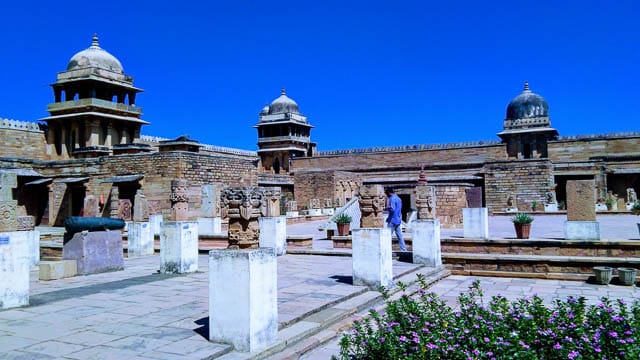
Culture
Gwalior is a notable mixture of different cultures influenced by the various dynasties that ruled it. It is primarily the amalgamation of Braj andBundeli cultures. From folk dance & music to art and poetry, Gwalior has a rich cultural heritage. It houses the birthplace and mausoleum of the famous musician Tansen, who was one of the “navratnas” in Akbar’s court. The famous Gwalior Gharana is the earliest of Khyal Gharnas and has influenced many Indian Classical Musicians. Ghag and Jagnik, the two prominent folk poets also hail from Gwalior. The traditional folk dance here includes Ahiri, Sahara, and Baredi.
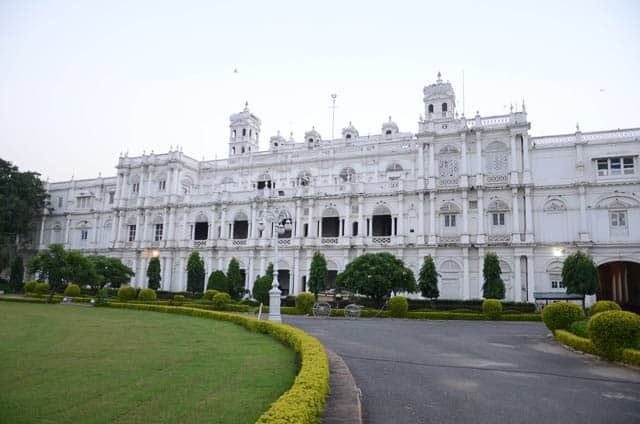
Places of Interest
Gwalior Fort: Popularly known as the “Gibraltar of India”, the Gwalior Fort is the star highlight of the city. Constructed in the 8th century, this hill fort includes 6 palaces, architectural beauty like the Chinese Dragon, and various rock-cut temples. Emperor Babur used to call it the “pearl among the Indian fortress” and the cityscape from the fort is a must-watch.
Gujari Mahal Archaeological Museum: The Gujari Mahal Archeological Museum was originally a beautiful palace built by Man Singh for his favorite wife, who was a Gujar. It was converted into a museum in 1922 and displays numerous statues, sculptures, and other artifacts that date back to even the 1st and 2nd centuries.
Sun Temple: This temple gets its inspiration from the Konark’s Sun Temple and has been constructed around 1988 by a well-known industrialist G.D. Birla. The temple is dedicated to the Sun God and is an exquisite architectural beauty made up from the red sandstones and marbles.
Jai Vilas Palace Museum: Built in the 19th century, the Jai Vilas Palace Museum is a residence of the royalty which has now also been converted to a museum. This museum showcases the swords and armor from the Shah Jahan’s and Aurangzeb’s era and a shield of the Jhansi’s queen Laxmi Bai. This European architecture Palace is also famous for its Durbar Hall.
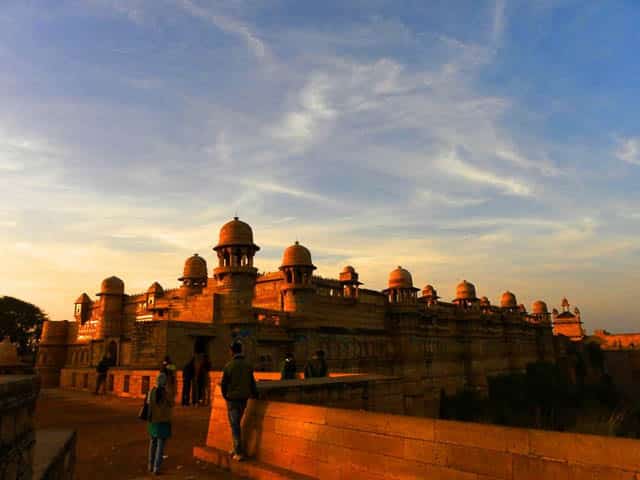
The Saas Bahu Temple: Also known as Shahasrabahu Temple, this temple is dedicated to the Lord Vishu incarnation with thousands (shahastra) hands (bahu).This twin complex temple is located near the Gwalior Fort and was built by Kachhwaha king, Mahipal in 1092. With its unique pyramidal architecture without archways, it is a key tourist spot in the city.
Tansen Memorial: The tomb of Tansen or Tansen Memorial is the mausoleum of a famous music maestro, Tansen who is buried along with his teacher, a Sufi saint named Mohammed Ghaus. This monument is a magnificent work of Mughal architectural style and every year the Tansen Music Festival is held here in November and December.
Gopachal Parvat Rock Cut Sculptures: These are the series of impressive Jain rock-cut monuments of the 7th and 15th centuries, depicting their Tirthankaras (spiritual teachers) in meditative poses. The sculptures are carved from the hill slope and are located in the south region of the Fort complex. These one of their kind architectural marvels are a sight to behold.
Teli Ka Mandir: The Teli ka Mandir or Telika Temple is a splendid architectural monument worth admiring in the city of Gwalior. It is devoted to Lord Vishnu. It is also situated in the Gwalior fort complex and is the highest and oldest structure. The architectural style is the fusion of Dravidian and Nagara with some influences from the style of Buddhists.
Chhatris of Scindia Dynasty: The Chhatris of the Scindia Dynasty was built in the honor and memory of the rulers of this dynasty. The key attractions here are the beautiful pavilion and elegant domes which are made up of pink and yellow sandstones. It is located amidst a beautiful garden in the Chhatri Bazar.
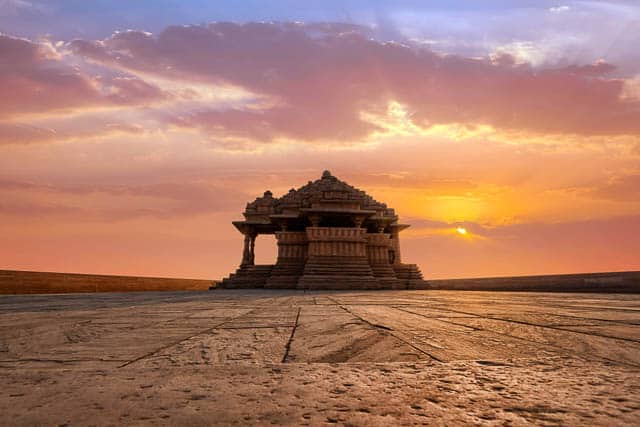
Nearby Attractions
Bateshwar Ancient Temples: Located at a distance of 40 km from the fort city, Bateshwar Temples are a group of ancient temples. Some of them are dedicated to Lord Vishnu whereas the majority of them are dedicated to Lord Shiva. These artistically chiseled temples are not the live temples, hence can be explored without any restriction.
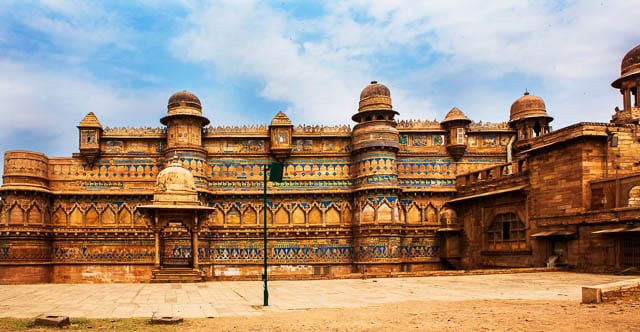
Where to stay
There are many comfortable accommodations available in the city. Taj Usha Kiran Palace is one of the luxurious and magnificent 5-star hotels located near the Jai Vilas Palace. Another popular accommodation facility is the rarestDeo Baghheritage hotel which houses many historical artifacts and a peaceful lush green garden.